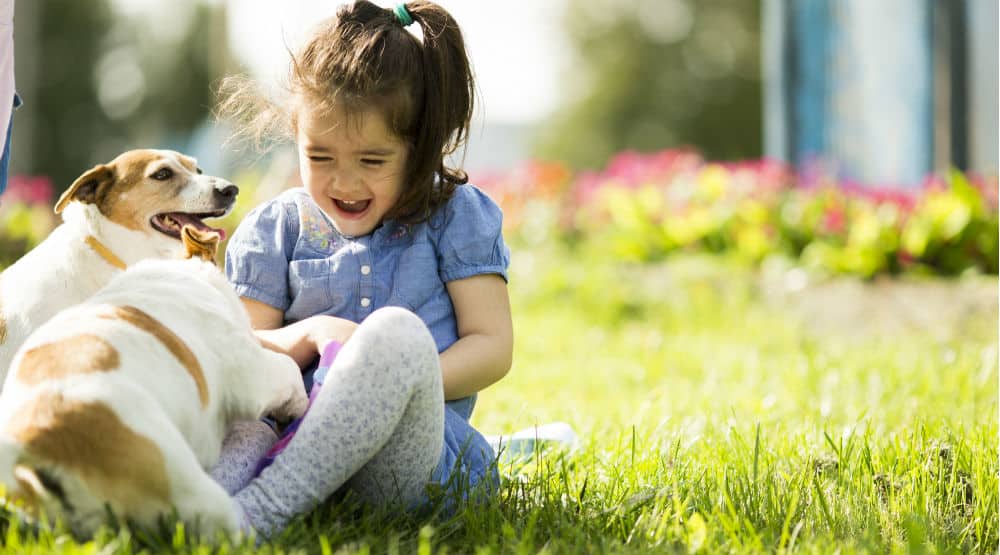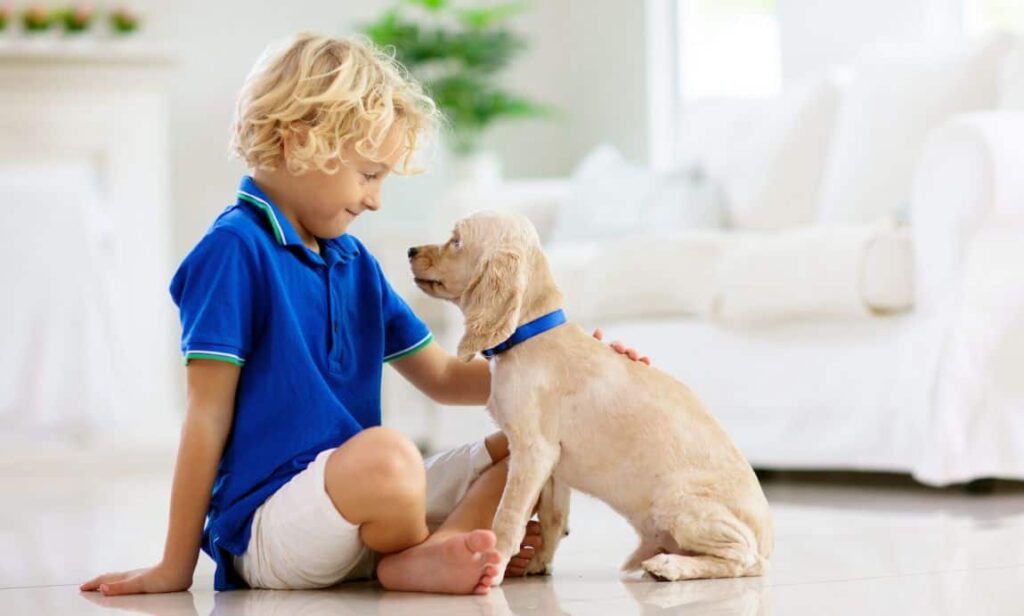
The bond between children and dogs is one of the most cherished and enduring relationships in the world. Dogs often serve as loyal companions, playmates, and protectors for children, offering unconditional love and support throughout their formative years. However, it’s essential to teach kids safe and appropriate ways to interact with dogs to prevent accidents and ensure the well-being of both children and animals. In this article, we’ll explore the importance of teaching kids safe animal handling and provide tips for fostering positive interactions between children and dogs.
1. Understand Dog Behavior
Before teaching kids how to interact with dogs, it’s crucial to understand canine behavior and body language. Dogs communicate primarily through body language, using signals such as wagging tails, relaxed posture, and facial expressions to convey their emotions and intentions. Teaching children to recognize and interpret these signals can help them understand when a dog is feeling happy, relaxed, anxious, or agitated, enabling them to adjust their behavior accordingly.
2. Always Supervise Interactions
Whenever children and dogs are together, it’s essential for adults to supervise their interactions closely. Young children may not understand how to interact safely with dogs or recognize warning signs of aggression, so it’s up to parents and caregivers to provide guidance and intervene if necessary. Supervision allows adults to intervene quickly in case of any misunderstandings or potential danger, ensuring the safety of both children and dogs.

3. Teach Gentle Touch
One of the first lessons children should learn about interacting with dogs is the importance of gentle touch. Encourage kids to pet dogs softly and avoid rough or aggressive handling, which can startle or upset the animal. Show children how to approach dogs calmly and respectfully, allowing the dog to sniff their hand before initiating contact. Remind children to avoid pulling ears or tails, hugging too tightly, or climbing on dogs, as these actions can be uncomfortable or painful for the animal.
4. Respect Personal Space
Just like humans, dogs have their own boundaries and preferences when it comes to personal space. Teach children to respect a dog’s boundaries and avoid invading their space without permission. Encourage kids to give dogs space when they’re eating, sleeping, or resting, and to approach them slowly and cautiously to avoid startling or overwhelming the animal. Remind children to never disturb a dog that is eating or chewing on a toy, as this can lead to resource guarding behavior.
5. Use Positive Reinforcement
Positive reinforcement is a powerful tool for teaching children safe animal handling skills. Praise and reward kids for using gentle touch, respecting personal space, and following safety guidelines when interacting with dogs. Positive reinforcement helps reinforce desired behaviors and encourages children to continue practicing safe handling techniques in the future. Consider using stickers, praise, or small treats as rewards for children who demonstrate appropriate behavior around dogs.
6. Set Boundaries
Establish clear boundaries and rules for children when interacting with dogs to ensure their safety and well-being. For example, teach children to avoid approaching unfamiliar dogs without permission from a parent or caregiver, as well as to never approach a dog that is tied up, behind a fence, or in a car. Emphasize the importance of asking the dog’s owner for permission before petting or interacting with their pet, and remind children to always respect the owner’s decision, even if it means not being able to pet the dog.
7. Teach Bite Prevention
Educating children about bite prevention is essential for their safety around dogs. Teach kids to recognize warning signs of aggression, such as growling, snarling, bared teeth, and stiff body posture, and to move away calmly if they encounter a dog displaying these behaviors. Encourage children to never approach a strange dog’s face, stare into their eyes, or attempt to take away their food or toys, as these actions can increase the risk of a bite. Remind children to always ask an adult for help if they feel scared or uncomfortable around a dog.
8. Lead by Example
As role models for children, adults play a crucial role in shaping their attitudes and behaviors toward animals. Lead by example by demonstrating safe and respectful interactions with dogs yourself. Show children how to approach dogs calmly and confidently, using a gentle voice and relaxed body language. Model positive reinforcement techniques and praise children for following safety guidelines when interacting with dogs. By setting a positive example, adults can instill lifelong values of empathy, compassion, and responsibility in children when it comes to caring for animals.
9. Provide Education and Resources

Educate children about the importance of responsible pet ownership and the needs of dogs. Teach them about proper care, feeding, exercise, and training techniques, as well as the significance of spaying/neutering and regular veterinary care for dogs. Provide age-appropriate books, videos, and online resources that teach children about dog behavior, safety, and welfare. Encourage children to ask questions and seek guidance from adults if they’re unsure about how to interact with dogs or interpret their behavior.
10. Encourage Empathy and Compassion
Above all, encourage empathy and compassion in children toward animals. Teach kids to consider the feelings and needs of dogs and to treat them with kindness, respect, and understanding. Encourage children to advocate for the welfare of animals and to speak up if they witness any mistreatment or neglect. By fostering empathy and compassion in children from a young age, we can help create a future generation of responsible pet owners and compassionate advocates for animal welfare.
In conclusion, teaching kids safe animal handling is essential for promoting positive interactions between children and dogs and preventing accidents or injuries. By educating children about canine behavior, supervising their interactions, teaching gentle touch and respect for personal space, using positive reinforcement, setting boundaries, teaching bite prevention, leading by example, providing education and resources, and encouraging empathy and compassion, we can empower children to develop healthy, respectful, and fulfilling relationships with dogs that last a lifetime. By instilling these values in children, we can create a safer and more compassionate world for both children and animals alike.

